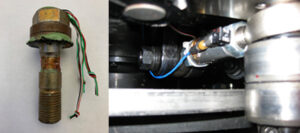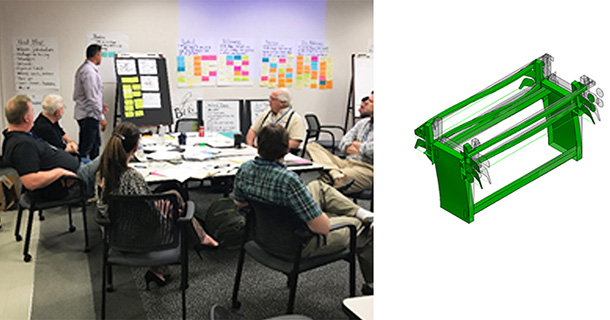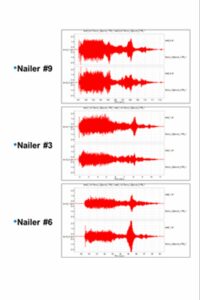Per the Gartner Information Technology Glossary, hyperautomation is a business-driven, disciplined approach to rapidly identify, vet, and automate as many business and IT processes as possible. It involves the orchestrated use of multiple technologies, tools, or platforms, including:
- Artificial intelligence (AI)
- Machine learning
- Event-driven software architecture
- Robotic process automation (RPA)
- Business process management (BPM) and intelligent business process management suites (iBPMS)
- Integration platform as a service (iPaaS)
- Low-code/no-code tools
- Packaged software
Hyperautomation is an expansion of information automation—it adds a layer of advanced technology to automation. Hyperautomation is focused on creating a data superhighway between all functions in an organization to optimize and improve human processes.
Other types of decision, process, and task automation tools are focused on leveraging and scaling digital business operations and software automation systems within an organization. Since its publication in 2019, the Gartner Principles of Hyperautomation have become a strategic focus for many IT organizations, resulting in the initiation of broad-scope projects to develop linkages, implement information automation, enable data collection and data mining, and automate reporting processes.
Outside of Robotic Process Automation (RPA), the implementation of hyperautomation as a manufacturing improvement engine is largely overlooked. Currently, the primary relationship between the concepts of hyperautomation and manufacturing is limited to traditional Materials Requirements Planning (MRP) and Enterprise Resource Planning (ERP) systems, which do not focus on extracting new and more relevant data streams from manufacturing processes and unit operations. At Force-4, we explored how hyperautomation can be magnified in new and exciting ways to deliver similar results to manufacturing processes.
THE SOLUTION
Creative Interpretation of Hyperautomation for Manufacturing Improvement
With creative interpretation, hyperautomation can be an innovation framework and the foundation for Overall Equipment Efficiency (OEE) Overall Equipment Effectiveness (OEE): An Overview | Reliable Plant) and manufacturing process improvement, serving as an innovation framework for automation development and a foundation for legacy equipment automation enhancement and retrofit.
This is accomplished by creating new, more productive, and meaningful data streams that originate as close to the interface between the manufacturing process and the raw materials passing through it.
THE PROCESS
Hyperautomation as a Framework for Manufacturing Automation Improvement
The principles of hyperautomation can be used as a framework to successfully develop and implement enhanced “component-sensor” based data streams for both new and legacy manufacturing environments. Component sensors are custom sensors where the machine component itself is modified and calibrated to provide a data stream (force, pressure, temperature, etc.) at the interface of the raw material and manufacturing machine (Figure 1).

Figure 1. A bolt in the load path between an actuating arm on a two-stage PET bottle blow molding machine was modified to become a “component-sensor” that provided a direct force measurement for the unit operation.
The framework is developed by:
- Assessing the opportunity and need for machine automation and improvement, considering both new design and legacy equipment automation modification.
- Defining the specific scope of automation.
- Identifying needed data streams beyond primary process streams currently available.
- Developing custom and/or integrating new commercially available sensors into the equipment system, where possible.
- Integrating new data streams into existing data flow via component sensors.
- Monitoring, analyzing, and creating new “near-field” performance metrics to provide process insights.
1. Assess the Opportunity
Defining the scope of automation needed begins with an audit of the equipment system or the concept of the system being considered. The audit aims to identify items that negatively impact efficiency, scrap, and quality. The audit should begin with the incoming material streams and, in most cases, end when the sub-components, component, or product exits the manufacturing line. The audit should include reviewing downtime records and interviews with line operators and mechanics (Figure 2).

Figure 2. Interview/audit of unwind stand unit operation in a process involving cellulose fibers
2. Define the Scope of Automation
The scope of automation is determined by assessing what is possible and practical as well as determining which system/unit operation brings the most value in the context of improved OEE and/or throughput, whether part of a new design or retrofit. This vetting process is used to establish the magnitude of the opportunities and establish priorities relative to value.
3. Identify New Data Streams
Whether the goal is to build new manufacturing automation equipment or improve a legacy equipment system, success requires:
- Identify new data streams directly related to the machine’s operation and located at the “converting interface” between raw materials and manufacturing machinery.
- Evaluate legacy equipment functionality, quality, and utility against new goals through prototyping before committing to modification.
- Identify the sensor types needed or those you ‘wish you had.’ The wish you had list become candidates for custom component sensors.
In the case of the new automation, the prototyping process can be replaced by a design review that includes the finite element, model-based digital twins of the new system by experienced machine designers, manufacturing engineers, mechanical engineers, and electrical engineers with component-sensor development experience. The goal of the brainstorming session is to conceive new streams of data directly related to the machine’s operation and located at the “converting interface.”

4. Develop Custom Component-Sensors or Integrate New Sensors
With the advancement of the Industrial Internet of Things, (IIoT) What is Industry IoT (4.0)? | CMS Connected (cms-connected.com), the availability of new sensor types and configurations has expanded significantly. In addition, many engineering services companies that historically provided field instrumentation services offer component-sensor development capabilities, including our parent company, Stress Engineering Services, Inc. (SES).

Figure 4. Image of custom component-sensor and traditional load cell to make a direct measurement of the axial force and rotating reaction torque created by an auger in an ice making process.
5. Integrate New Data Streams
The core of success is new, more meaningful data streams that contain more, richer information about the current operating characteristics and operational health of the equipment system. Through a combination of custom component-sensor instrumentation and commercial sensor integration, these new data sources can be fertile field for data mining by data scientists to reveal new actionable insights related to machine operation and health as well as raw material variability.
6. Monitor & Analyze
The new data stream will initially look “foreign” until its information language is understood. If selected properly, the data from the new sensor(s) will be a new voice into the “physics of the process” and will represent direct windows into product variability and machine health.

Figure 5. Dynamic data from a machine illustrating the differences in process set-up conditions. These differences translate directly into variability of product quality.
Figure 5. Dynamic data from a machine illustrating the differences in process set-up conditions. These differences translate directly into variability of product quality.
THE IMPACT
At SES/Force-4, the goal of hyperautomation in manufacturing automation and digital transformation is to identify manufacturing line performance through measurements made at the interface of the equipment and the raw materials passing through it. The data generated in these new information streams can provide fresh, real-time insights related to raw material variability, product quality, and manufacturing machinery health, life, and reliability, which ultimately leads to improved OEE.
Force-4 — Smart Ideas for A Smart World. We are a force for innovation because we envision and translate brilliant ideas into highly experiential and efficient products. Our expert team of strategists, industrial designers, and engineers unlock new ideas while navigating complex technical challenges to take your product to market faster.
Stress Engineering Services — Innovative Solutions for Cutting Edge Ideas. Our passionate, multidisciplinary team of expert problem-solvers believes that the future of innovation requires forward-thinking solutions and a tenacious commitment to cutting-edge ideas. Therefore, we commit to providing the most comprehensive design, analysis, and testing services with unsurpassed engineering integrity and expertise.
If your business requires forward-thinking solutions by a team with expert in-depth technical knowledge and proven performance in engineering design & analysis, thermal & fluid sciences, instrumentation, and testing, choose the Force-4/SES partnership!
AUTHORS

- Clint Haynes, founder of the Cincinnati office of Stress Engineering Services, has steadily grown the Cincinnati practice area while introducing breakthrough capabilities. He has a specialized focus on areas of medical, outdoor, and product innovation.
- Mike Johnson, Principal, has more than 30 years of innovation in product development, design control, new product transfers, and short-run manufacturing.
Ref: C005-ED-A newly expanded role for HYPERAUTOMATION: Manufacturing the Challenge
Keep in touch with us.
Sign up for our newsletter.
